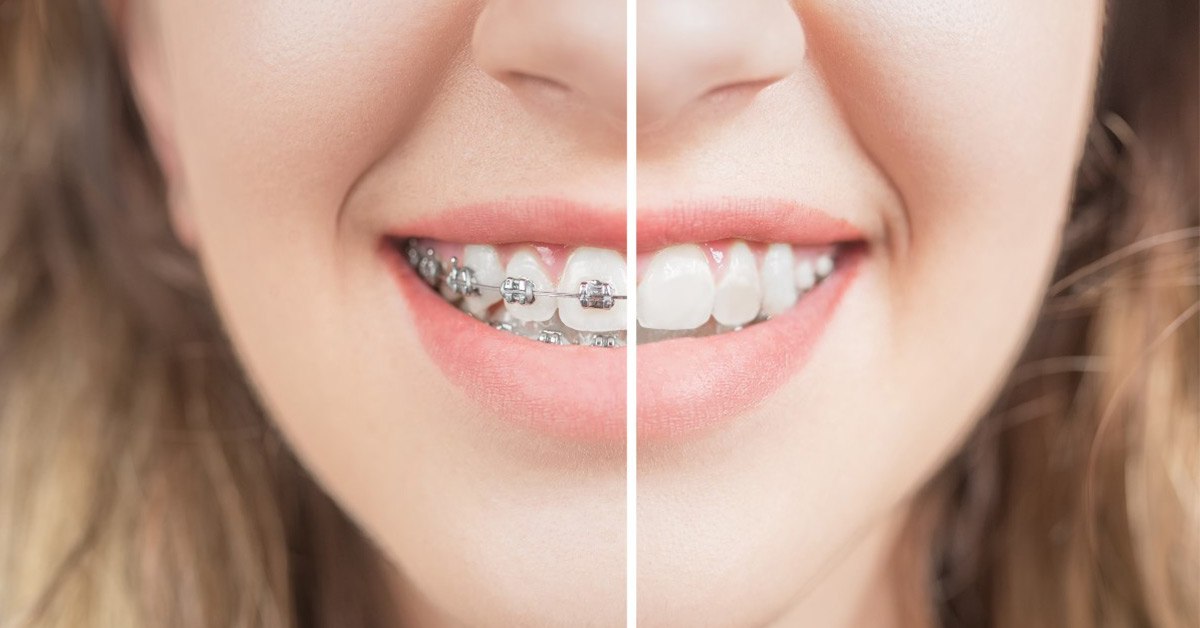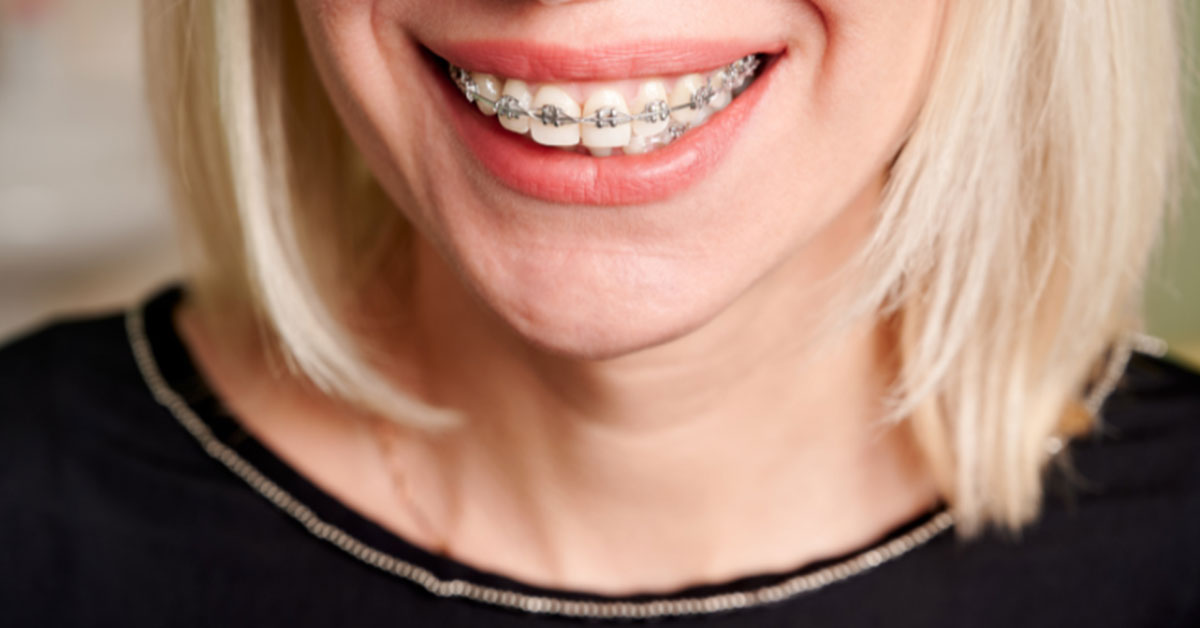Teeth straightening is more than just about aesthetics; it plays a crucial role in overall oral health. If you are looking for a way to enhance your smile and improve your dental function, understanding the process is key. Join 4smile today and take the first step toward a healthier, more confident smile through advanced orthodontic treatments. We dives into the science of teeth straightening, exploring modern treatments and how they can transform your smile.
Teeth straightening treatments address both cosmetic and functional issues caused by misaligned teeth. These treatments have evolved significantly, offering faster, more effective, and comfortable options. Whether you opt for traditional braces or clear aligners, the advancements in orthodontics today provide patients with incredible options to achieve the smile they’ve always wanted.

What Is Teeth Straightening?
Teeth straightening refers to the process of moving misaligned teeth into a more functional and attractive position. This can be done through various orthodontic treatments, from traditional braces to clear aligners. The purpose is to improve both the appearance and function of the teeth.
Straightening teeth isn’t just about aesthetics—it’s also crucial for improving oral health. Misaligned teeth can lead to problems like gum disease, tooth decay, and difficulty chewing. Through modern orthodontic treatments, patients can address these issues while enjoying a more confident smile.
The Evolution of Teeth Straightening Treatments
Orthodontics has significantly evolved over the years. In the past, metal braces were the only option for teeth straightening, often making the process uncomfortable and visibly noticeable. But with time, materials and techniques improved.
Today, patients have access to a variety of treatments. From metal braces to clear plastic aligners, the options are more comfortable, discreet, and effective. With innovations in technology, the treatment process has also become faster and more personalized.

How Teeth Move: The Biological Process
Teeth move when continuous pressure is applied to them. This pressure causes the bone tissue around the teeth to remodel. On one side of the tooth, bone is broken down, while on the opposite side, new bone forms, allowing the tooth to shift into its new position.
This biological process is gradual and requires consistent pressure. Whether using braces or clear aligners, the movement is achieved over time, typically lasting from several months to a few years, depending on the severity of the misalignment.
Traditional Braces vs. Modern Clear Aligners
-
Traditional Braces:
-
Made of metal brackets and wires.
-
Provide consistent pressure to shift teeth over time.
-
Visible and require frequent adjustments.
-
-
Modern Clear Aligners:
-
Made of smooth, transparent plastic.
-
More discreet and removable for easier cleaning.
-
Require patient compliance to wear consistently for best results.
-
Both options are effective, but each has its own advantages. Braces are highly effective for complex cases, while clear aligners offer more flexibility and discretion, making them ideal for those concerned about aesthetics during treatment.
The Role of Technology in Modern Orthodontics
Technology has revolutionized orthodontics, making treatments faster and more precise. With 3D imaging and digital planning, orthodontists can create highly accurate treatment plans based on detailed scans of the patient’s teeth.
Additionally, advancements like smart braces and digital impressions have streamlined the treatment process. These technologies ensure better-fitting aligners and allow for real-time monitoring, helping orthodontists track progress and make adjustments when necessary.
The Benefits of Teeth Straightening
There are numerous benefits to straightening your teeth. First and foremost, it improves oral health. Straighter teeth are easier to clean, reducing the risk of plaque buildup, gum disease, and tooth decay.
Secondly, teeth straightening can help alleviate issues such as jaw pain and poor bite. Misaligned teeth can lead to an uneven bite, causing discomfort and strain on the jaw muscles. Correcting alignment not only enhances appearance but also improves bite function and comfort.

When Should You Consider Teeth Straightening?
You should consider teeth straightening if you have crooked, crowded, or spaced-out teeth, as these issues can affect both the appearance and function of your smile. It’s also beneficial if you’re experiencing bite issues or discomfort due to misalignment.
While orthodontic treatments are most effective during childhood and adolescence, adults can also benefit from them. The best time to start depends on your specific situation, so it’s always recommended to consult with an orthodontist to determine the best course of action.
The Future of Teeth Straightening Treatments
The future of teeth straightening looks promising with the integration of artificial intelligence (AI) and even more advanced materials. These technologies will allow for quicker, more personalized treatments.
The next generation of aligners and braces will likely be more comfortable, efficient, and virtually invisible, making teeth straightening more accessible and appealing to a wider range of patients. Innovations in 3D printing could also make the process faster and more cost-effective in the coming years.

FAQs
How long does teeth straightening take?
The duration varies depending on the severity of the misalignment. Traditional braces can take 18–24 months, while clear aligners may require 6–18 months.
Are teeth straightening treatments painful?
While there may be mild discomfort after adjustments or the first few days of wearing aligners, modern treatments are much more comfortable than previous methods.
Can I eat with braces or aligners?
Braces require avoiding certain foods, but clear aligners are removable, so you can eat whatever you like but must wear them for at least 22 hours a day.
Is teeth straightening only for teenagers?
No, adults can also benefit from teeth straightening. Many adults choose clear aligners for a more discreet treatment option.
How can I maintain my smile after treatment?
You will likely need to wear a retainer after treatment to ensure your teeth stay in their new positions.
Conclusion
Teeth straightening is an essential treatment for improving both your smile and oral health. With modern advancements, you now have several effective, comfortable, and discreet options to choose from. Whether you opt for traditional braces or modern clear aligners, the results will be well worth the investment.
Join 4smile today to explore how modern orthodontic treatments can help you achieve the perfect smile. The science behind teeth straightening continues to evolve, ensuring better results in shorter time frames. Embrace the future of orthodontics and start your journey toward a healthier, more confident smile today!




